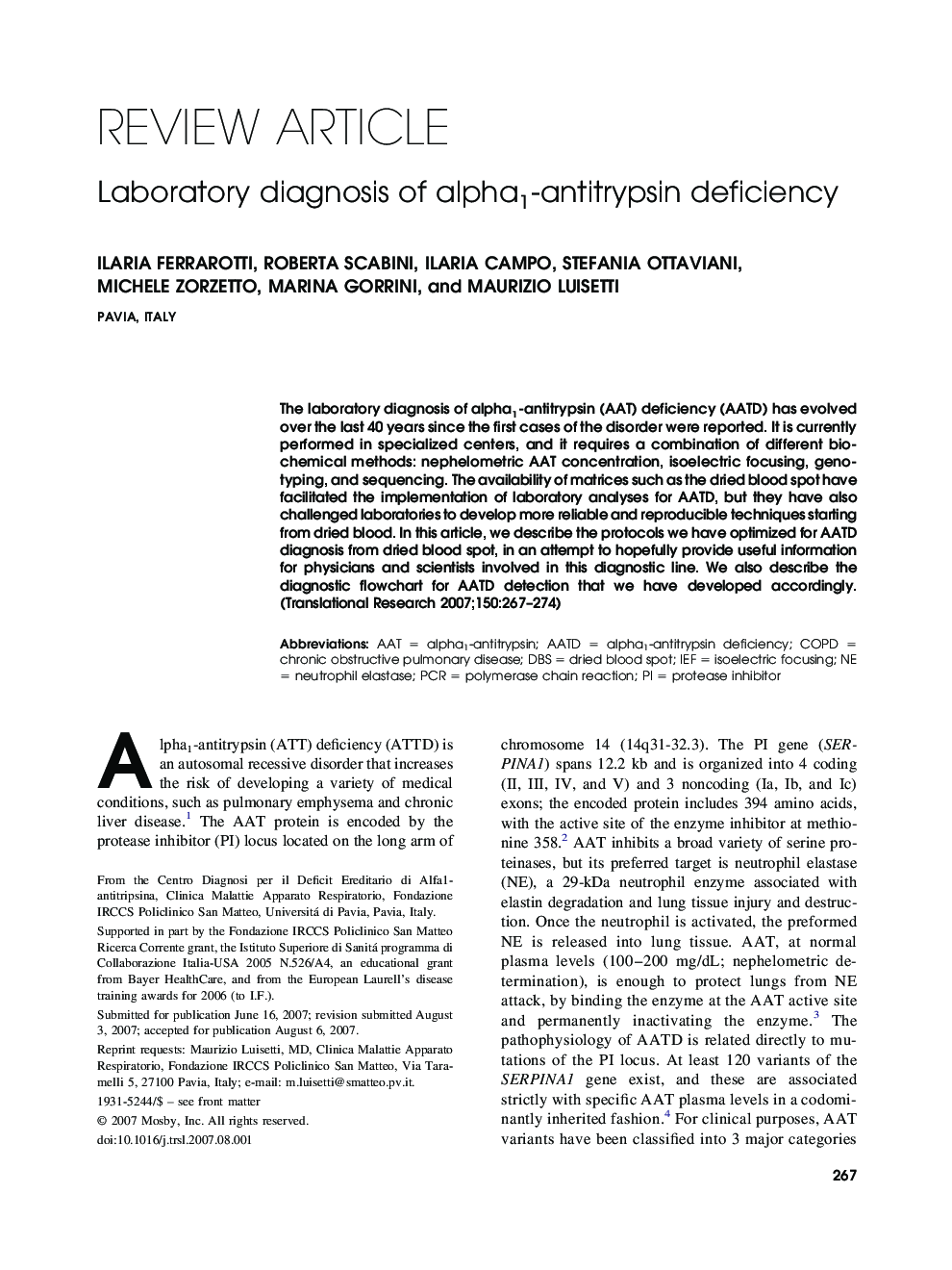| Article ID | Journal | Published Year | Pages | File Type |
|---|---|---|---|---|
| 3841443 | Translational Research | 2007 | 8 Pages |
The laboratory diagnosis of alpha1-antitrypsin (AAT) deficiency (AATD) has evolved over the last 40 years since the first cases of the disorder were reported. It is currently performed in specialized centers, and it requires a combination of different biochemical methods: nephelometric AAT concentration, isoelectric focusing, genotyping, and sequencing. The availability of matrices such as the dried blood spot have facilitated the implementation of laboratory analyses for AATD, but they have also challenged laboratories to develop more reliable and reproducible techniques starting from dried blood. In this article, we describe the protocols we have optimized for AATD diagnosis from dried blood spot, in an attempt to hopefully provide useful information for physicians and scientists involved in this diagnostic line. We also describe the diagnostic flowchart for AATD detection that we have developed accordingly.
